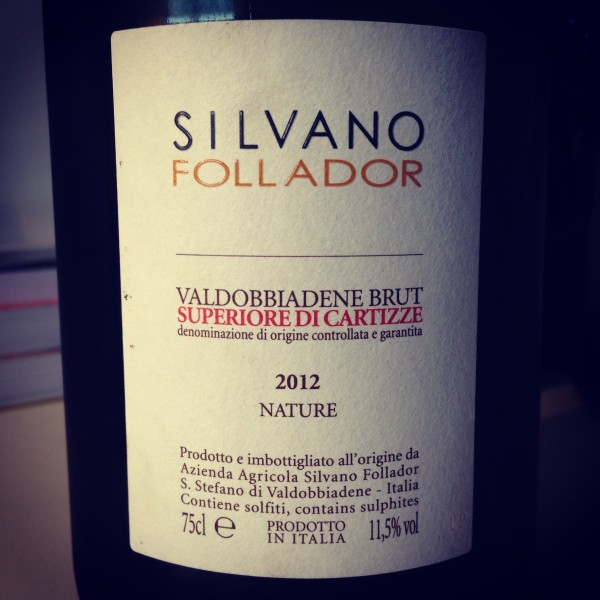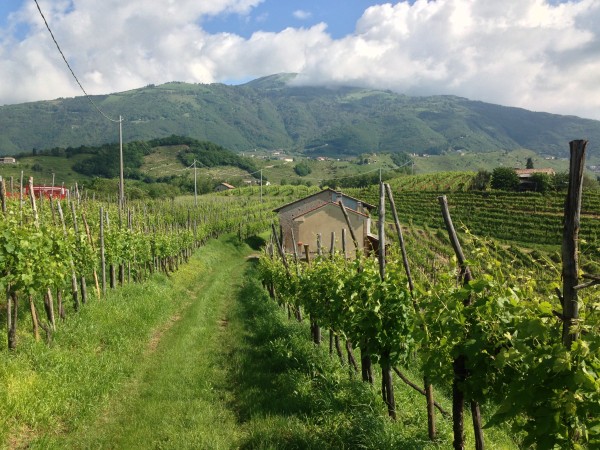Silvano Follador Prosecco Cartizze 2012
Posted on 3 January 2014
Greetings in the New Year, dear Readers. And in a new section of my blog: Wine of the Day, where I’ll recommend the best from the many samples (and purely leisurely bottles) that come through my lips each week.
Still in festive New Year mood, I opened Silvano Follador’s extraordinary Valdobbiadene Prosecco Superiore Cartizze Nature 2012. Given Prosecco’s impressive export success in the last few years, chances are that you’re familiar with this north-eastern Italian bubbly. Usually it is a fairly anodyne but light-hearted and enjoyable sparkling wine to drink when the occasion doesn’t justify a 30€ bottle of Champagne.
The best Prosecco, made from the hilly vineyards of Valdobbiadene and Conegliano in the region of Veneto, has the advantage of having some real flavour, unlike industrial DOC Prosecco that tastes of water, acid and (plenty of) sugar. But they too are filigree 11% alc. wines that at best, have an allusive peary and appley flavour, and essentially are a way of making the world’s most neutral grape, Prosecco (aka Glera), drinkable at all.
Not here. Silvano Follador and his sister Alberta are the most single-minded producers I met during a recent trip to Prosecco country. They voluntarily cut their production by two-thirds in 2007 in order to produce the absolute best from their tiny 3.5-hectare holdings. The vineyards are tended organically and in the cellar, this is the most natural-made Prosecco you’’ll ever taste – it is notably the only wine in the entire area to undergo spontaneous fermentation.
The result has to be tasted to be believed. Instead of the vaguely meringue-scented nullity of most Prosecco, this Cartizze, coming from the area’s most-exposed grand cru vineyard, has the full-blown intensity of a grown-up white wine. The layers of ripe stone fruit flavour keep unfolding in the glass, even as the wine warms up: an extraordinary feat for Prosecco, usually a wine to drink in a hurry. There is just 5 grams of residual sugar but the mouthfeel is broad and creamy. There are subtle mineral hints, and echoes of peach on the finish: Cartizze is a stunningly sunny spot. On the finish, the noble bitterness, Prosecco’s hallmark, is maintained but not aggressive.
A 100-point Prosecco if there ever was one. And the absolutely best bottle I’ve tasted from this appellation. 6K bottles are made so it is a little hard to find: around 18€ in Europe and $24.99 (from K&L) in the US.Disclosure: the bottle was a gift from Alberta Follador on my visit to the estate in May 2013.




